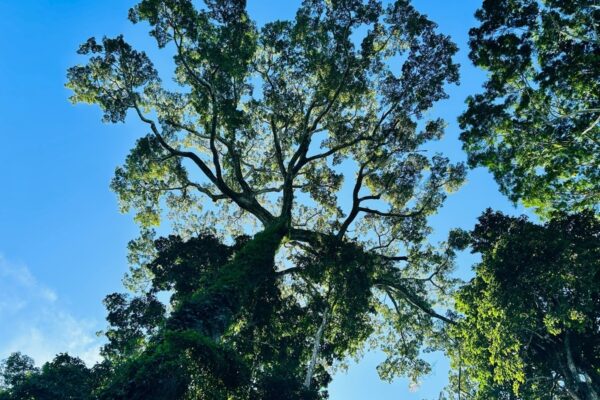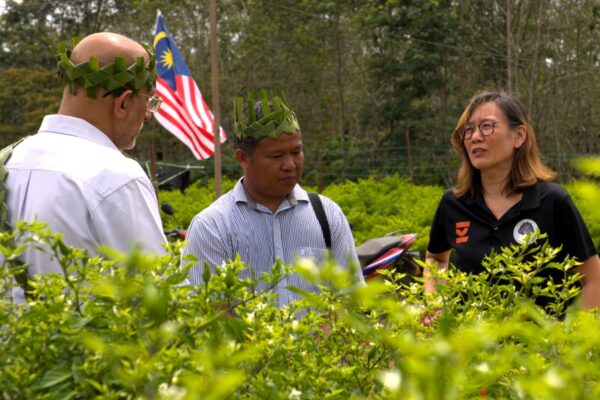An Opinion Piece by Björn Roberts, Earthworm Foundation Senior Adviser, Forests.
The world's turning faster. Production, consumption and societal attitudes are transforming quicker than we can keep up. Shifts in the natural world - climate change and diminishing biodiversity – are still more radical, hitting forest-dependent communities hard.
What does this mean for companies committed to sourcing forest products responsibly? For one thing, they need to understand what’s happening in their sourcing landscapes - relying on regulations and certifications is not enough.

‘No-deforestation’ policies of the last decade pioneered this approach. While these rightly focused on the tropics, Earthworm member companies quickly recognised that their responsibilities extend wherever they source forest products.
But you might think that Sweden could be an exception. A famously law-abiding, consensus-seeking nation that doubled its forest cover in the last century, where timber reserves continue to grow, and where the forest industry led the world in adopting FSC certification. If anywhere is ‘low risk’ surely Sweden is...
Not necessarily! Sweden has less than one per cent of global forest cover, yet it's the world’s third-largest exporter of forest products. Producing so much from a relatively small area is a huge industry success, but the Swedish Forest Model that makes that possible has long been criticised by environmental campaigners, ecologists, and Sami reindeer herding communities.
More recently, public debate about Sweden's forests has gone mainstream and polarised.
The national policy of maximising sustainable production in balance with social and environmental values is under growing strain. As demands and pressures intensify, forests cannot provide 'more of everything'.
Trade-offs are unavoidable, and tough choices must be made – but views on what those choices should be are deeply divided. As public concern about climate change and biodiversity loss grows, and forest owners look to defend their long-cherished rights to decide how to manage their land, the future of Sweden's forests has become deeply contentious.
Today, the industry can maintain and grow production only by cutting Sweden's last unprotected forest that is not already under even-aged management.
These surviving patches are found in the vast northern counties of Västerbotten and Norrbotten, where, over the last 70 years, most productive forest land has been brought under intensive management to produce pulpwood, biomass and sawlogs. These planted stands are younger, denser, darker, more simply structured, and more homogenous than the naturally regenerating forest mosaic that they are rapidly replacing. They're also more productive.
Critics of even-aged forests say that their spread is responsible for destroying rare habitats crucial for species that depend on older forests, young naturally regenerating forests, and more structured stands with plentiful deadwood and where light reaches the forest floor. And, they say, it's reducing the landscape's potential to store carbon. At the same time, Sami reindeer herding representatives say that modern forestry is one of the main factors making it increasingly difficult for reindeer herds to migrate from the mountainous interior to the coastal east – a practice that for centuries has been at the heart of Sami cultural identity.

Greenpeace and other campaign organisations allege that companies, including SCA, are threatening the future of hundreds of Red List species, and of Europe's only recognised indigenous people's way of life, and of releasing vast stores of carbon locked in old forests. This has obvious implications for companies like Nestlé that source SCA packaging in northern Sweden.
SCA emphasised its adherence to FSC certification standard requirements, including protection of ‘High Conservation Value' forest, retention of old trees and dead wood to improve habitat on managed stands, and engaging Sami reindeer herders according to the principles of Free Prior and Informed Consent (FPIC) - in many instances going beyond FSC requirements. SCA highlights the potential of wood from Swedish forests to displace fossil fuels and energy-intensive construction materials while forest carbon pools continue to grow.
These very different accounts of the same forest landscape pose a challenge to downstream companies like Nestlé - how should they respond?
Sweden's prominence in the pulp and paper industry further complicates the issue, and similar issues apply in neighbouring Finland. If this region is too risky, where can a company source?
Nestlé, Earthworm Foundation, SCA, and DS Smith (Nestlé's direct pulp and paper supplier) answered this challenge by forming a partnership to carry out a Healthy Forest Landscape (HFL) assessment – a methodology developed by Earthworm - of Västerbotten County. We aimed to clarify how Nestlé's responsible sourcing commitment is affected on the ground and to identify opportunities to improve outcomes. (Download the report here).

Västerbotten covers five million hectares just below the Arctic Circle and produces nearly all of the pulpwood for SCA's Obbola kraftliner mill, which supplies Nestlé.
The assessment took two years to complete (slowed by Covid restrictions) and combines the findings of diverse forest stakeholder consultations with commissioned expert evaluations of trends in forest cover, carbon stocks, biodiversity and community wellbeing – especially concerning Sami reindeer herding communities.
Headline findings confirmed strongly divergent views both on what the future of Västerbotten's forests should be and on the likely effects of even-aged forestry on biodiversity and carbon values. We found that forest cover has been stable over the past decade. Forest carbon pools grew and are set to grow for decades to come, but growth will be slower if harvest intensities increase and growth models don't take account of future climate-change-driven forest disturbances (warming in Arctic regions is likely to be three to four times higher than the global average).

The picture of biodiversity was mixed. Some indicators gave stable or inconclusive trends. Threatened species highly dependent on forest types that have shrunk and fragmented are very likely to have declined, and some ecologically important common species, including blueberries and lichens, have reduced sharply in abundance under denser, darker tree cover. However, data for how well other species adapt to even-aged stands with retention trees, increased dead wood, etc, and data for how effective protected areas are in conserving threatened species were not available. An overall 'biodiversity trend' could not be given with high confidence, but reasons to take a precautionary approach are clear.
A key finding on Sami Reindeer Herding Communities' well-being was that an adequate set of indicators for this unique way of life has not yet been developed and measured. Nonetheless, loss and degradation of important grazing grounds, loss of lichen-rich forest, climate impacts on winter grazing, and increased forest disturbance were all flagged as serious problems – issues on which SCA and other forest companies are engaged.
The HFL assessment found rich details within these findings, and, in consulting and collaborating with leading experts and practitioners, we made recommendations for the forest industry in general and for steps that SCA, Nestlé, Earthworm and DS Smith can take together with local stakeholders.
These will focus on Sami Reindeer Herding Communities and biodiversity values.
Ultimately, the future of Västerbotten's and Sweden's forests will be a societal and governmental decision – and nature will have its say. Meanwhile, the HFL approach enables this group - a leading producer, supplier and buyer - to collaborate innovatively and practically on crucial issues in a critical forest landscape. The future of responsible production and sourcing must include more of this.


